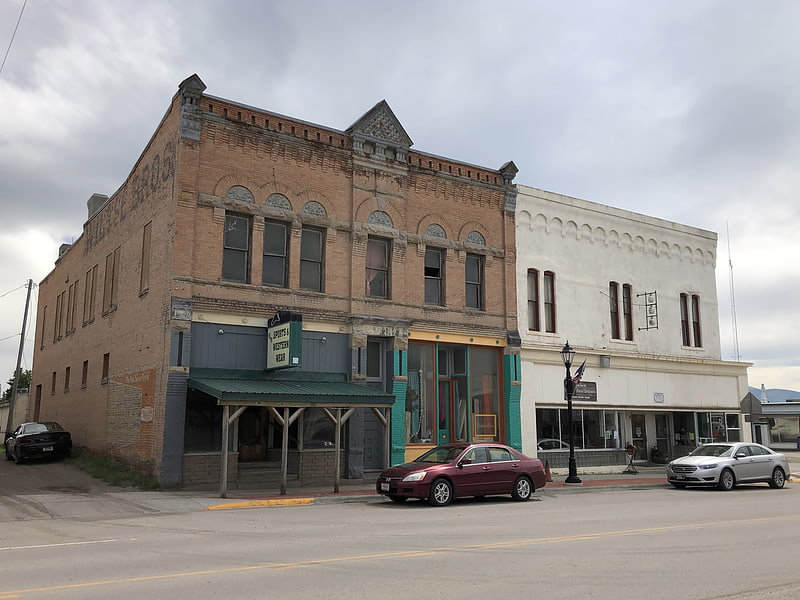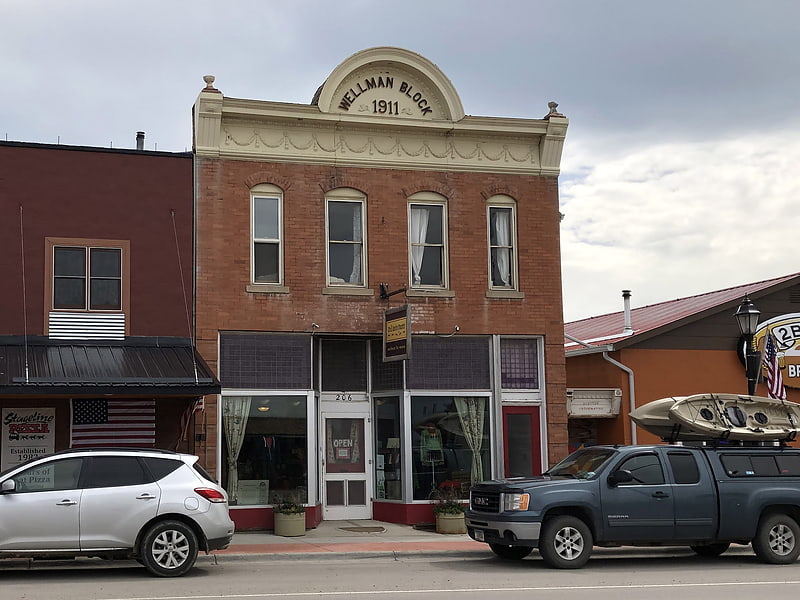Discover 5 hidden attractions, cool sights, and unusual things to do in White Sulphur Springs (United States). Don't miss out on these must-see attractions: Castle Museum and Carriage House, Byron R. Sherman House, and Parberry Block East. Also, be sure to include Union League of America Hall in your itinerary.
Below, you can find the list of the most amazing places you should visit in White Sulphur Springs (Montana).
Table of Contents
Castle Museum and Carriage House

Historical place, History museum, Museum
Address: 310 1/2 2nd Ave NE, 59645-9121 White Sulphur Springs
Byron R. Sherman House

Museum in White Sulphur Springs. The Byron R. Sherman House, also known as The Castle or The Castle of White Sulphur Springs, is a site on the National Register of Historic Places located in White Sulphur Springs, Montana, United States. It was added to the Register on September 15, 1977. The property includes a carriage house.
The Castle Museum is operated by the Meagher County Historical Society. It includes period furniture, photos, mineral samples, clothing and artifacts from the region's past.
It is a two-story granite mansion upon an elevated basement on a hilltop overlooking the City of White Sulphur Springs. According to its NRHP nomination, "with its heavily rusticated stone (the back, or east facade is laid up in field stone), is a very fine frontier rendition of the late 19th century Romanesque Style." It is squarish, about 40 by 40 feet (12 m × 12 m) in plan, with addition of two full height towers on the south side.[1]
Parberry Block East

Parberry Block East is a site on the National Register of Historic Places located in White Sulphur Springs, Montana. It was built in 1891. It was added to the Register on April 22, 2009.
It was deemed significant "for its strong association with the commercial history of White Sulphur Springs during the late nineteenth and early-to-middle twentieth centuries" and also as "a fine example of Western Commercial architecture with Late Victorian Romanesque Revival style details."[2]
Union League of America Hall

Building in White Sulphur Springs, Montana. The Union League of America Hall is a site on the National Register of Historic Places located in White Sulphur Springs, Montana. It was added to the Register on August 20, 1998.
In 1998 it was the First Presbyterian Church. It has also been known as Diamond Lodge No. 5 of the Independent Order of Good Templars and as The First Church of White Sulphur Springs.
It was built in 1867 by a Union League and is a 24 by 74 feet (7.3 m × 22.6 m) building, on a concrete basement made in 1935. It is "simple in form and with minimal adornment"; it "is a vernacular version of the Greek Revival Style. The front-gabled form, pedimented door and windows, and six-over-six sash provide links to the style. Additionally, the raised elevation of the front imparts a subtle sense of monumentality to the building."[3]
Wellman Block

Heritage building in White Sulphur Springs, Montana. The Wellman Block is a site on the National Register of Historic Places located in White Sulphur Springs, Montana. It was added to the Register on March 7, 1994.
It was built c.1880 and was renovated in 1911, perhaps after fire damage. It is a two part commercial building with red brick laid in common bond.
Its 1993 NRHP nomination describes it as "a highly preserved example of popular Western Commercial design, which was common in Montana through the territorial and early statehood years. Embodying several elements of this style, the Wellman Block presents the characteristic brick front to the street while masking a simpler gable roofed mass behind. The symmetrical storefront with recessed entrance, regularly placed double hung windows across the second story and decorative parapet are all common to this treatment."[4]